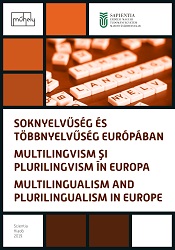Teaching the Present Perfect to Native Hungarian Learners
Teaching the Present Perfect to Native Hungarian Learners
Author(s): Tünde Nagy
Subject(s): Language and Literature Studies
Published by: Scientia Kiadó
Keywords: Present Perfect; Native Hungarian Learners
Summary/Abstract: The present paper focuses on the challenges native Hungarian speakers face during the acquisition of the Present Perfect, and at the same time it reflects on the methods that would be suitable for teaching the Present Perfect to them. Taking into consideration the fact that in Hungarian one and the same verb form can have different aspectual values (perfect, perfective, or imperfective) depending on several segmental and suprasegmental factors (such as the presence of verb particles, the type of the direct object, or the use of adverbials but also focus, stress, and word order) and that there is no specific verb form that would correspond to the Present Perfect, the struggle of native Hungarian learners with this tense-aspectual form is not difficult to understand. After briefly presenting the values of the Present Perfect and the way they are expressed in Hungarian, the paper presents the results of a questionnaire on the uses of the Present Perfect filled out by native Hungarian speakers, students at Sapientia Hungarian University of Transylvania. The paper stresses the importance of combining deductive and inductive methods when teaching the values of the Present Perfect to native Hungarian learners.
Book: Soknyelvűség és többnyelvűség Európában. 2017. május 25–27., Marosvásárhely
- Page Range: 229-240
- Page Count: 12
- Publication Year: 2019
- Language: English
- Content File-PDF

